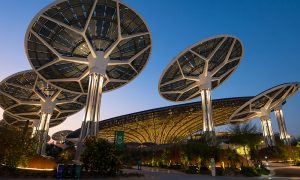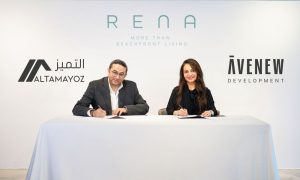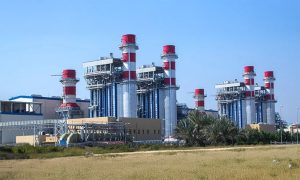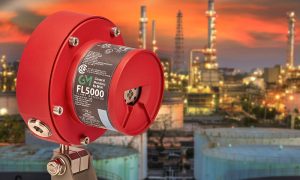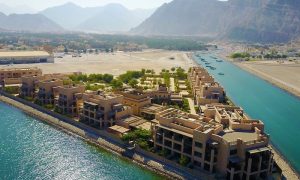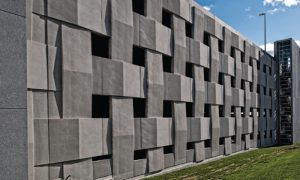Smooth and Seamless: The importance of joint-free flooring in the built environment
Jad Mansour Salame, concrete flooring specialist from the SURFACE flooring division of CCL, on the need for high specification flooring where a smooth, flat and seamless floor is business-critical for a building

We are expecting more of our built environment than ever before. Not only do buildings need to be cost-effective to build, they also need to be constructed within tight, often mission-critical, programmes, and deliver reduced operational costs.
Specification of appropriate flooring plays an essential role in creating an environment tailored to the purpose of the building. Requirements vary from sector to sector but the technology is available to install a post-tensioned (PT) concrete floor that is seamless, crack-free, levelled and with minute accuracy. It is also possible to use specialist polishing techniques to provide a dust-free, easy to clean floor, suitable for environments that need to be HACCP (Hazard Analysis and Critical Control Point) -compliant and buildings with aesthetic flooring requirements. A wide range of sectors can benefit from this permanent flooring solution as part of either a new build or refurbishment project, enhancing the functionality of the building and removing the need for any flooring overlay, which could add time, cost and maintenance requirements.
Warehousing and Logistics
In the warehousing and logistics sector, operators need to maximise the capacity of their facilities, which is often done by installing VNA (very narrow aisle) racking systems that utilise the full height of the building with minimal space lost to aisles. VNA warehouses often use automated order picking and rely on the smooth operation of specialist vehicles to navigate between SKUs (stock-keeping units).
For VNA layouts to be viable, the floor of the warehousing facility must comply with DM (defined movement) flatness specifications to enable VNA equipment to operate efficiently and safely. This requires a flooring specification that can be precision-levelled within an exacting tolerance. The floor must also provide a seamless, crack-free surface. This ensures that VNA racking is stable and secure and allows specialist equipment to move smoothly and efficiently through the aisles.
The selected flooring solution should also offer a hard-wearing and abrasion-resistant solution to ensure resilience from constant use by forklifts and automated equipment. In some environments, where the facility stores ‘white glove’, pharmaceutical or organic items, for example, the floor may also need to support a clean warehousing environment, with proven dust-proof performance.
Retail
In retail environments, it is not the accuracy of levelling that is critical to the success of the flooring specification but the long-term aesthetics. By using a special concrete mix design and specialist polishing techniques to create a decorative sheen, a high-end floor can be achieved at a much lower cost than an equivalent finish using tiles.
Using a flat and levelled polished concrete) floor in this way also avoids the maintenance issues associated with epoxy coatings, providing a robust solution for highly-trafficked areas that will maintain its quality appearance for an extended service life of at least 10 years.
Because the decorative finish is cast into the slab, a polished, joint-free floor slab also provides time savings on the build programme, avoiding the need for screed or time-consuming laying of decorative tiles.
Parking
The need to maintain the aesthetics of a residential, retail or leisure development within the parking lot is often overlooked, but this is often a visitor’s first contact with the building so a quality finish should be a priority.
Once again, a flat and level PT flooring solution is an excellent way of achieving this. Faster and more cost-effective to install than traditional parking lot flooring systems, this approach requires only routine cleaning, avoiding the need for onerous annual maintenance.
Healthcare and Pharmaceutical
Facilities constructed for the healthcare and pharmaceutical sectors must adhere to very strict specification requirements, aimed at reducing the risk of bacteria, infection and contamination. As a result, specialist flooring systems for this sector tend to be very expensive and must provide a seamless finish.
A joint-free, crack-free PT flooring system answers the demands of most bacteria-free, infection-controlled environments, with no cracks or joints that can harbour dirt and bacteria, and no potentially hazardous VOCs (volatile organic compounds). Less expensive than specialist healthcare and pharmaceutical flooring systems, a joint-free PT system can also be polished to provide a dust-free, HACCP-compliant environment.
Food and Beverage Processing
HACCP compliance is also important in the specification of flooring systems for the food and beverage sector because processing facilities must meet high standards of food hygiene.
For this reason, the sector is usually served by specialist flooring systems which are an expensive element of the build cost. By using a polished, joint-free PT slab as an alternative, specifiers can achieve the same bacteria-resistant seamless finish to gain HACCP and ISO certification, while reducing the initial cost of the facility and future maintenance expenditure. Precision levelling of the floor in this type of manufacturing environment can also provide advantages with the smooth operation of sensitive equipment.
Sports and Leisure
A joint-free, crack-free, sloped or levelled slab is also a major advantage in sports and leisure environments, for both indoor and outdoor courts.
For indoor courts, using laser-screed techniques in the slab construction ensures a level surface. This can be particularly important for environments where a specialist floor needs to be overlaid onto the slab, such as the parquet floors used in basketball, which have minimal tolerances.
For outdoor facilities, such as tennis courts, laser screeding can be used to create a precise gradient in the flooring surface to prevent ponding water.
Taking the ‘LEED’
Whether it’s to meet specific technical or aesthetic requirements, or to reduce the cost and programme involved in the project, a joint-free PT flooring system offers multiple advantages across a wide range of sectors. With no VOCs and an extended service life, it also offers a sustainable, greener alternative to more established flooring methods, contributing to LEED accreditation.
Content supplied by CCL. Read more about its PT solutions here.


